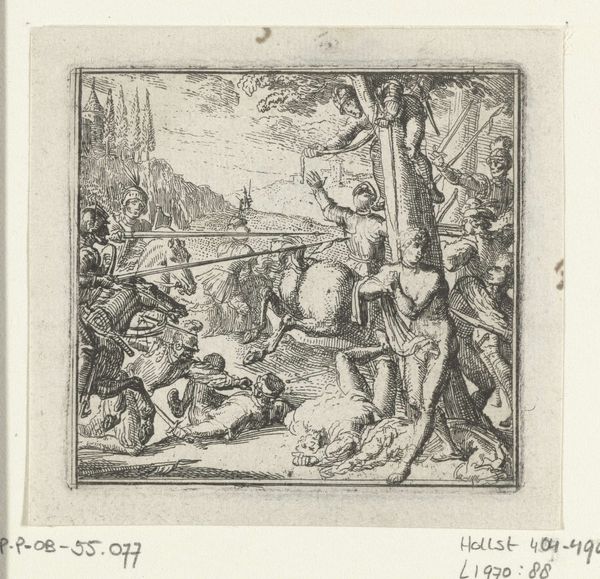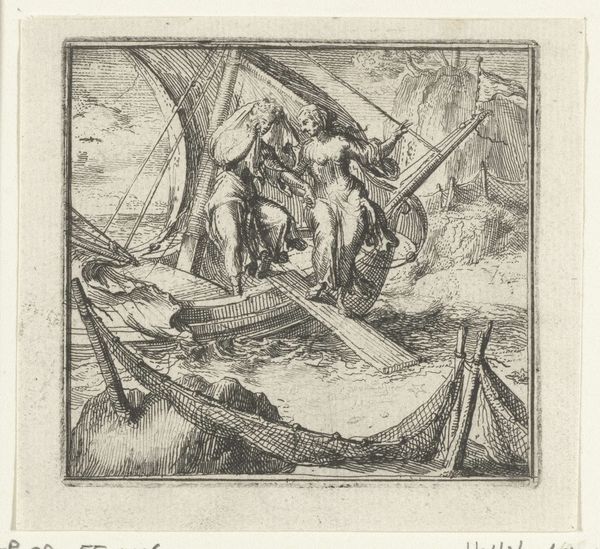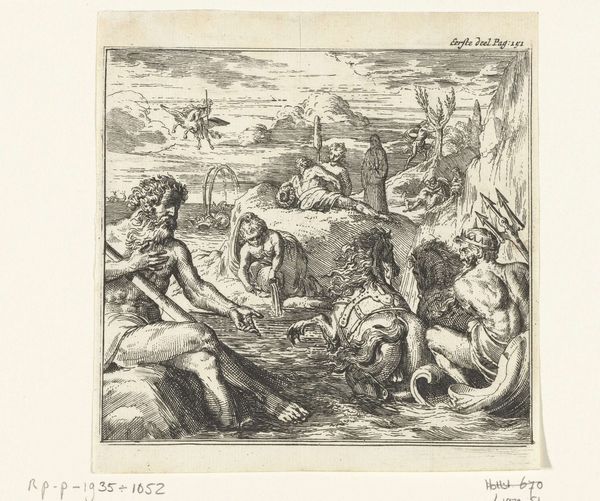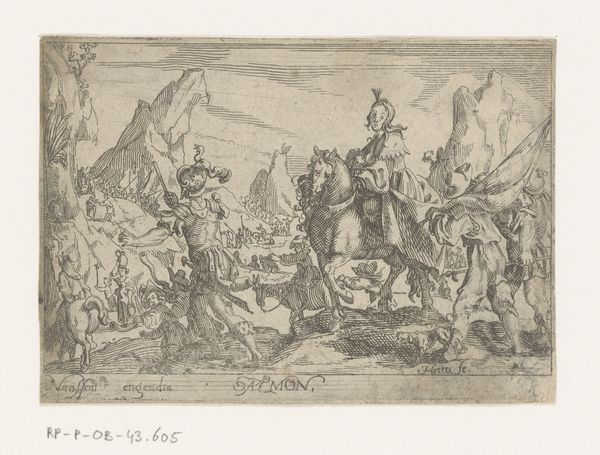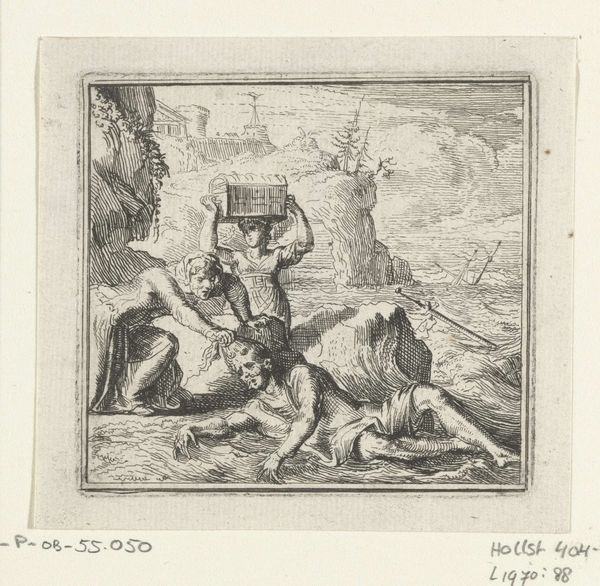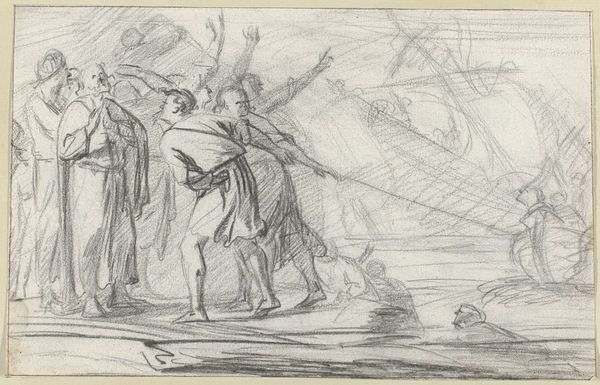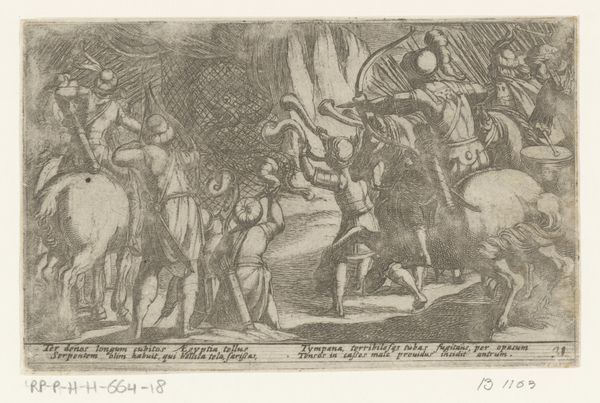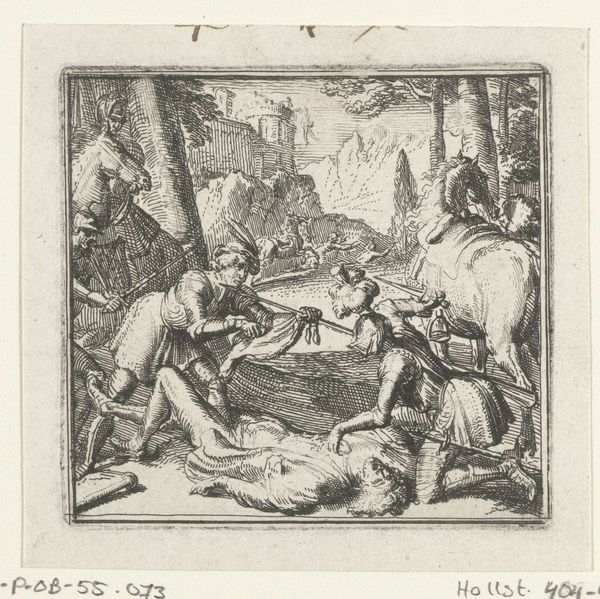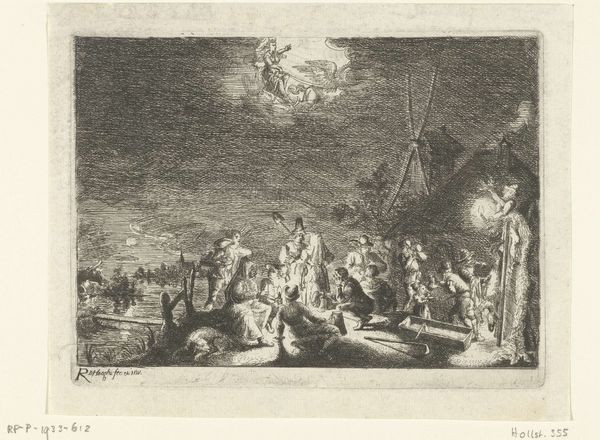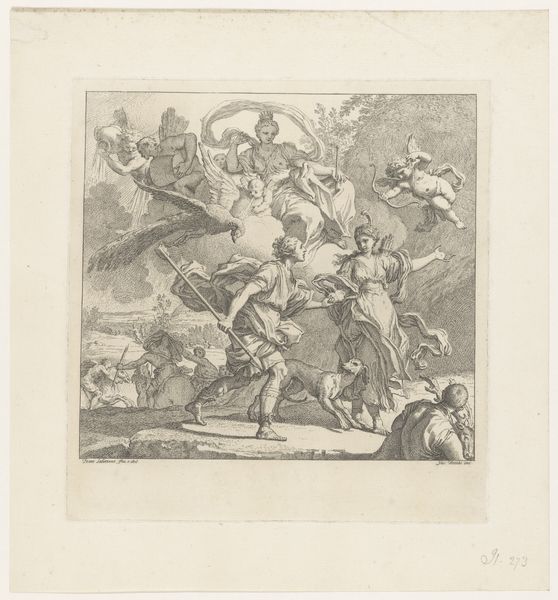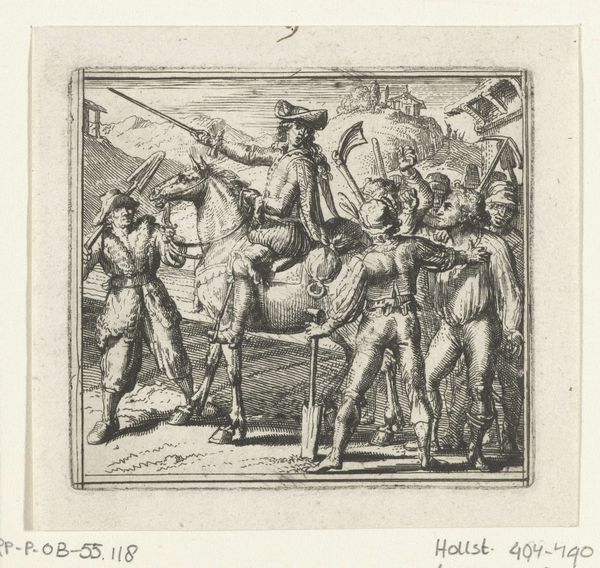
print, engraving
#
narrative-art
#
baroque
# print
#
figuration
#
line
#
history-painting
#
engraving
Dimensions: height 73 mm, width 80 mm
Copyright: Rijks Museum: Open Domain
This illustration for Boccaccio’s Decamerone was made by Romeyn de Hooghe in the Dutch Republic sometime between 1664 and 1708, likely using etching on laid paper. Look closely and you’ll see the entire image is composed of lines, made by incising an image onto a metal plate, inking the plate, and then running it through a printing press. The quality of the lines determine how the final image will appear, and the fineness of the lines in this instance are crucial to rendering the drama of the scene. The technique of etching was especially well-suited to the Netherlands, which had a robust industrial base to support the production of specialized tools and materials for printing. This in turn fueled a flourishing industry of printmaking, with a particular focus on reproducing literary subjects for a broad commercial audience.
Comments
No comments
Be the first to comment and join the conversation on the ultimate creative platform.

